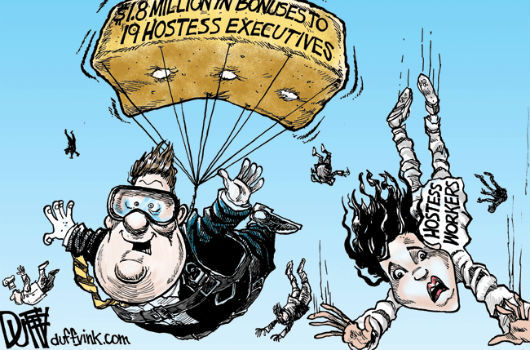Golden Parachutes
- Soham Mukherjee
- May 13, 2018
- 2 min read

On 8 September 2015, United Airlines CEO Jeff Smisek resigned as CEO of United Airlines on grounds of corruption and bribery charges involving David Samson, former chairman of the Port Authority of New York and New Jersey.
Turns out, Sampson had been successful in coercing United airlines executives in operating an unprofitable route from Newark to South Carolina’s capital, Columbia, where Samson happened to own a home where he would spend multiple weekends. The investigation was followed by multiple fines to regulatory agencies including the SEC and the US Justice Department.
Terrible stuff right? Oh, by the way, Smisek left with a “Golden Parachute” package worth an estimated 37 million along with other benefits like lifetime free parking at United Airlines hub airports.
Similar to severance payment clauses, Golden Parachutes are much richer and larger in the benefits they offer, which range from health care coverage to multiple years’ worth of compensation.
However, they were never designed to reward executives who leave the company on a voluntary basis or on grounds of a full blown scandal like our friend Jeff Smisek did.
Although the first usage of Golden Parachutes in employer’s contracts can be traced back to the 1960’s, it really came into the limelight during the merger wave of the eighties. During this period, various macroeconomic factors, tax code changes and easing of antitrust enforcement laws, made the atmosphere conducive to mergers. Soon, even the largest companies operated under the dread of a potential acquisition.
To align the interests of company management and shareholders, executive contracts increasingly started containing Golden Parachutes. The central idea here was to free the executive to make the tough decisions essential for success
Armed with healthy benefits and monetary compensation on leaving, CEO’s would less likely fight acquisition deals that would benefit the firm as a whole. Along with this, they would not keep a one track mind of not taking decisions that add an element of risk to their job. The Golden Parachute would give them the peace of mind and provide them with a safe “landing”.
Coming back to our protagonist, it is clear that not any of the above mentioned motives were even closely met. This was a pure case of dishonesty and abuse of power. No wonder, United Continental Holdings Inc. directors were sued by multiple pension funds shortly after the incident.
Is it a sign of fiscal prudence to pay out lavish Golden Parachutes despite the central motive behind the inclusion of the clause not being met?
Is additional financial incentives on such a large scale really required when it is the inherent fiduciary responsibility of executives to act and indulge in activities which are in the best interests of the firms they are leading?
In today’s age where terms like “corporate responsibility” and “corporate citizenship” have become hot button topics, there are relevant and important questions that all companies must ponder through.






Comentarios